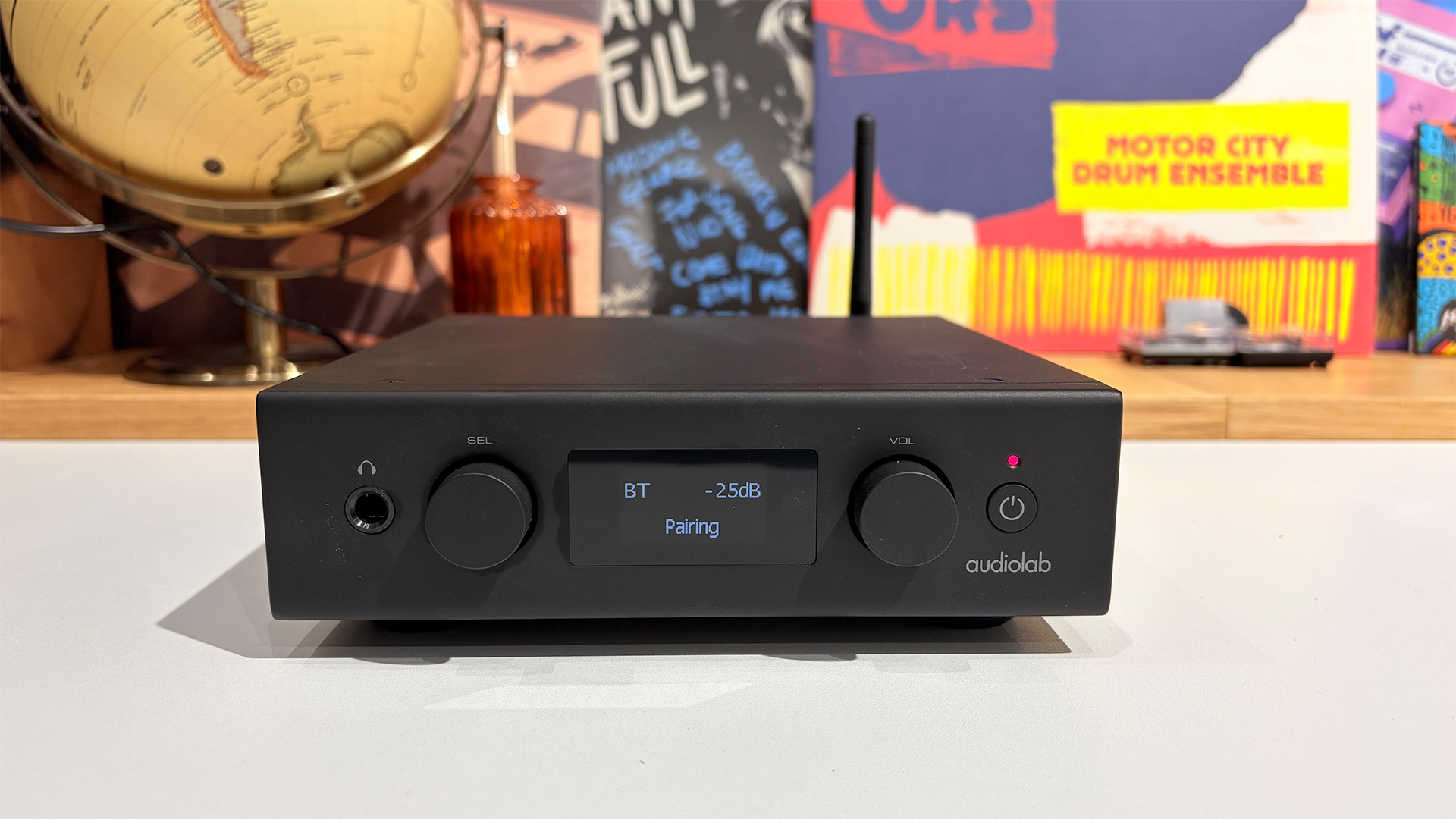What Hi-Fi? Verdict
Bright, colourful and surprisingly contrast-rich Mini LED-inspired picture quality makes the QN85B a strong all-rounder at its price
Pros
- +
Impressive brightness and contrast
- +
Good value for Mini LED technology
- +
Sharp native 4K and upscaled HD
Cons
- -
Limited effective viewing angles
- -
Dimming of small bright highlights
- -
No Dolby Vision support
Why you can trust What Hi-Fi?
The QE55QN85B represents the biggest test ever of Samsung’s Mini LED technology. Why? For starters, at its current price, it’s remarkably cheap by 55-inch Samsung Mini LED TV standards.
Second, and more worryingly, the QE55QN85B uses an IPS type of LCD panel rather than the VA panels Samsung typically uses on its premium TVs. IPS panels generally deliver wider viewing angles but substantially reduced contrast versus their VA equivalents, and once upon a time, Samsung’s TV range wouldn’t have been seen dead with an IPS panel in it.
With Samsung Display no longer producing new LCD panels, though, it seems Samsung Electronics has had to bite the IPS bullet. This raises one huge question: is Samsung’s new generation of Mini LED technology good enough to overcome the usual shortcomings (for TV use, anyway) of IPS technology?
Price
At £1099 / AU$1895, the QE55QN85B counts as a bargain by Samsung Mini LED standards. In fact, it’s a couple of hundred pounds cheaper than it was a mere month or two ago.
Competition in the Mini LED market from TCL and Hisense, in particular, has started to heat up over the past 12 months, with both companies offering Mini LED sets for even less than the price of this Samsung, though the latter’s 65U8HQ model serves as proof that featuring Mini LED technology is no guarantee of great picture quality.
While its Mini LED lighting is – in theory at least – the QN85B’s star attraction, it’s also a QLED TV, which means it uses Quantum Dots to create its colours. It benefits, too, from Dolby Atmos sound, plenty of premium gaming features, a comprehensive smart hub and one of Samsung’s AI-backed Neo Quantum Processor 4K picture engines. So you really do seem on paper to be getting a premium TV for pretty mid-range money.
Design
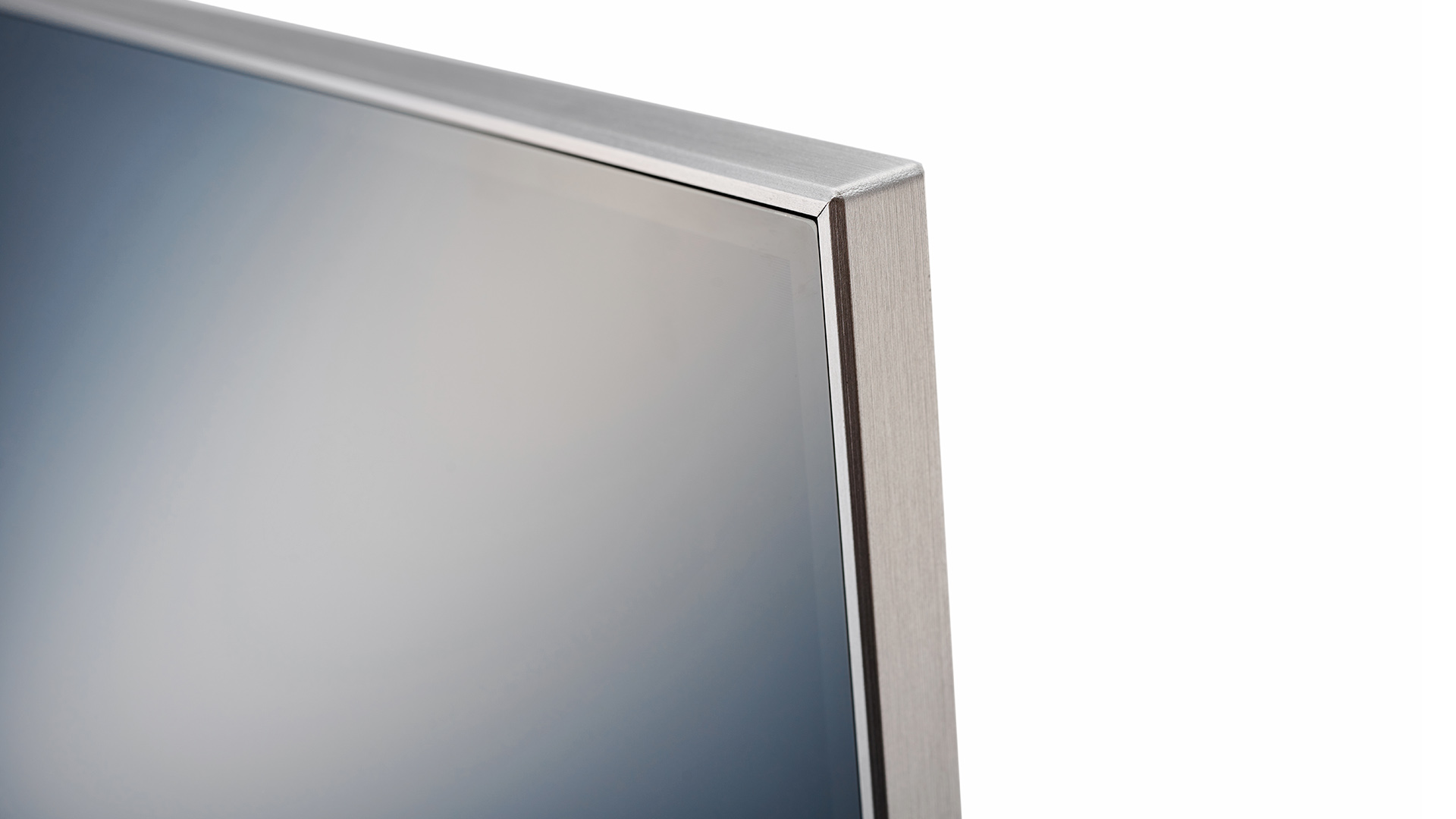
While the 55QN85B is inevitably not as stunningly thin as Samsung’s QD-OLED TVs (at least at their outer edges), it’s still much trimmer than you would expect of a TV that’s using a direct lighting array – albeit a Mini LED lighting array. The rear bulges out only a fraction over its central portion too, so the set still enjoys much of that distinctive monolithic, back-as-flat-as-the-front look that Samsung’s flagship LED TVs have enjoyed for a few generations now.
The latest hi-fi, home cinema and tech news, reviews, buying advice and deals, direct to your inbox.
Build quality is impressive too, with a gleaming silver metallic frame and stand, and enough heft to suggest plenty of quality innards. This build quality should also mean that the TV won't tip over at the slightest waft of a child’s hand.
The QN85B ships with two remote controls: one regular remote with plasticky build quality and lots of buttons, and one much sleeker, better-made remote with a stripped-back button count and built-in voice mic. This second ‘smart’ remote also, brilliantly, carries a solar panel on its back, removing the need for it to be fitted with any batteries. Ever.
Features
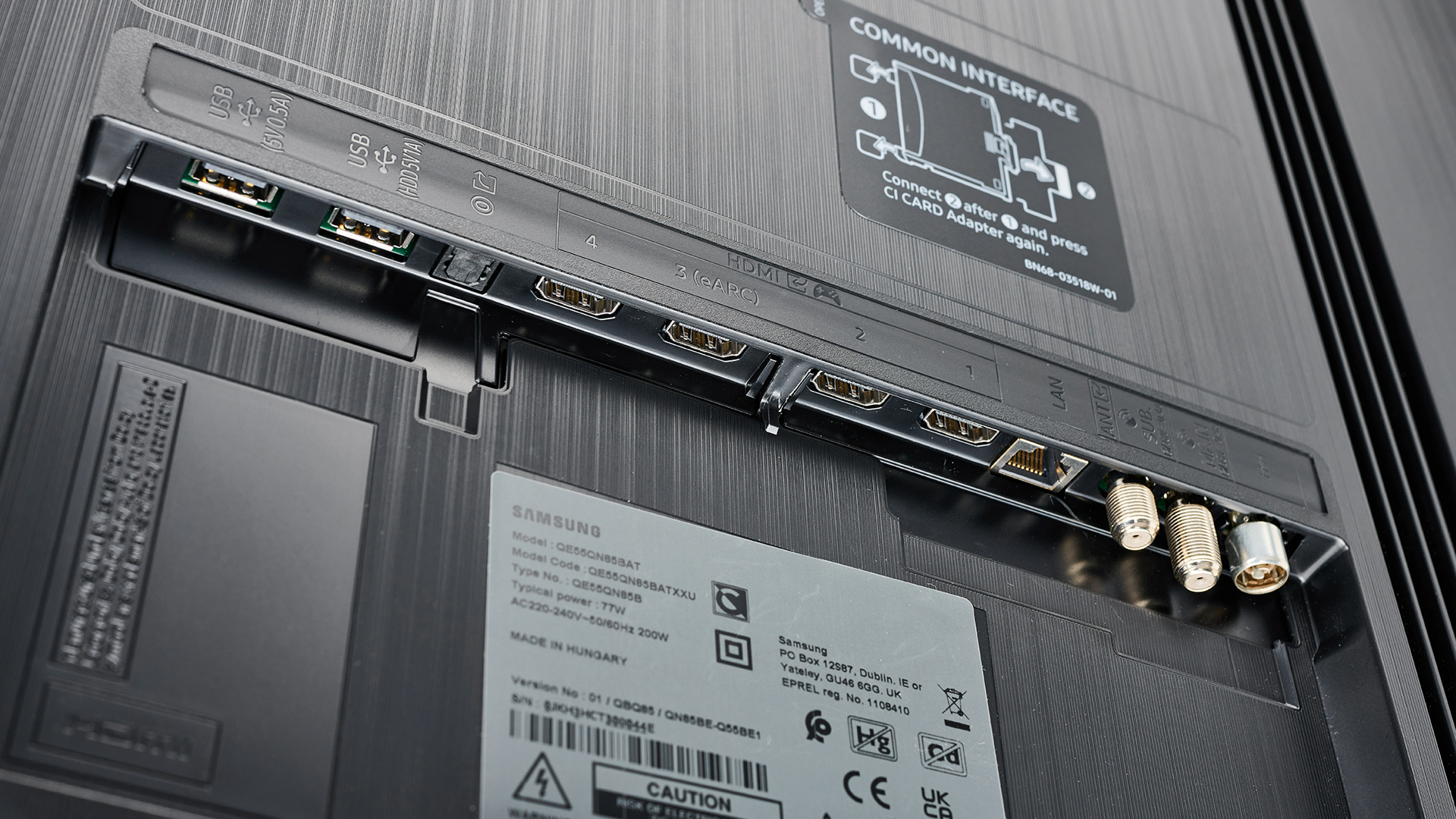
We’ve already mentioned that the QE55QN85B uses Mini LED backlighting, but we should briefly explain why that matters. The key point is that lighting the screen with much smaller LEDs than you get with regular LED TVs makes it possible to deliver more contrast control. Especially when, as is emphatically the case with the QE55QN85B, a far greater number of much smaller LEDs is partnered with an advanced local dimming system. The 55QN85B actually carries just over 500 dimming zones, which is impressive indeed for a 55-inch TV at this price.
The 55QN85B’s zone count is potentially further enhanced by Samsung’s Shape-Adaptive Light Control (SLC) feature, which is able to intelligently adjust the way the light addresses each zone to potentially improve the brightness of peak light points while simultaneously reducing so-called backlight blooming (circles or squares of extraneous light around bright objects that stand out against a dark background).
This feature has delivered impressive results on Samsung’s current higher-end Mini LED TVs and, hopefully, can still work well on this IPS-based model.
The Neo Quantum Processor 4K chip that controls the local dimming and SLC systems also draws on the collective know-how of numerous neural networks to figure out how to optimise the presentation of any image type it’s presented with, applying adjustments to a huge range of different picture elements in real-time. And before any AV purists get twitchy about this, the QN85B carries both a pretty accurate Movie preset and a very accurate Filmmaker Mode preset for viewers whose preferences lean that way.
The QN85A also sports a version of Samsung’s Object Tracking Sound audio feature, which in this implementation delivers a maximum of 60W across six dedicated speakers – including up-firers for a height effect – to deliver sound effects that appear to be coming from exactly the right place on the screen. So if a speed boat powers across or up and down the screen, its sound will track its progress.
OTS has been combined for Samsung’s current range with support for Dolby Atmos decoding, while Samsung’s Q-Symphony feature is on hand to combine the speakers in the TV with the speakers in a compatible Samsung soundbar to deliver a larger soundstage.
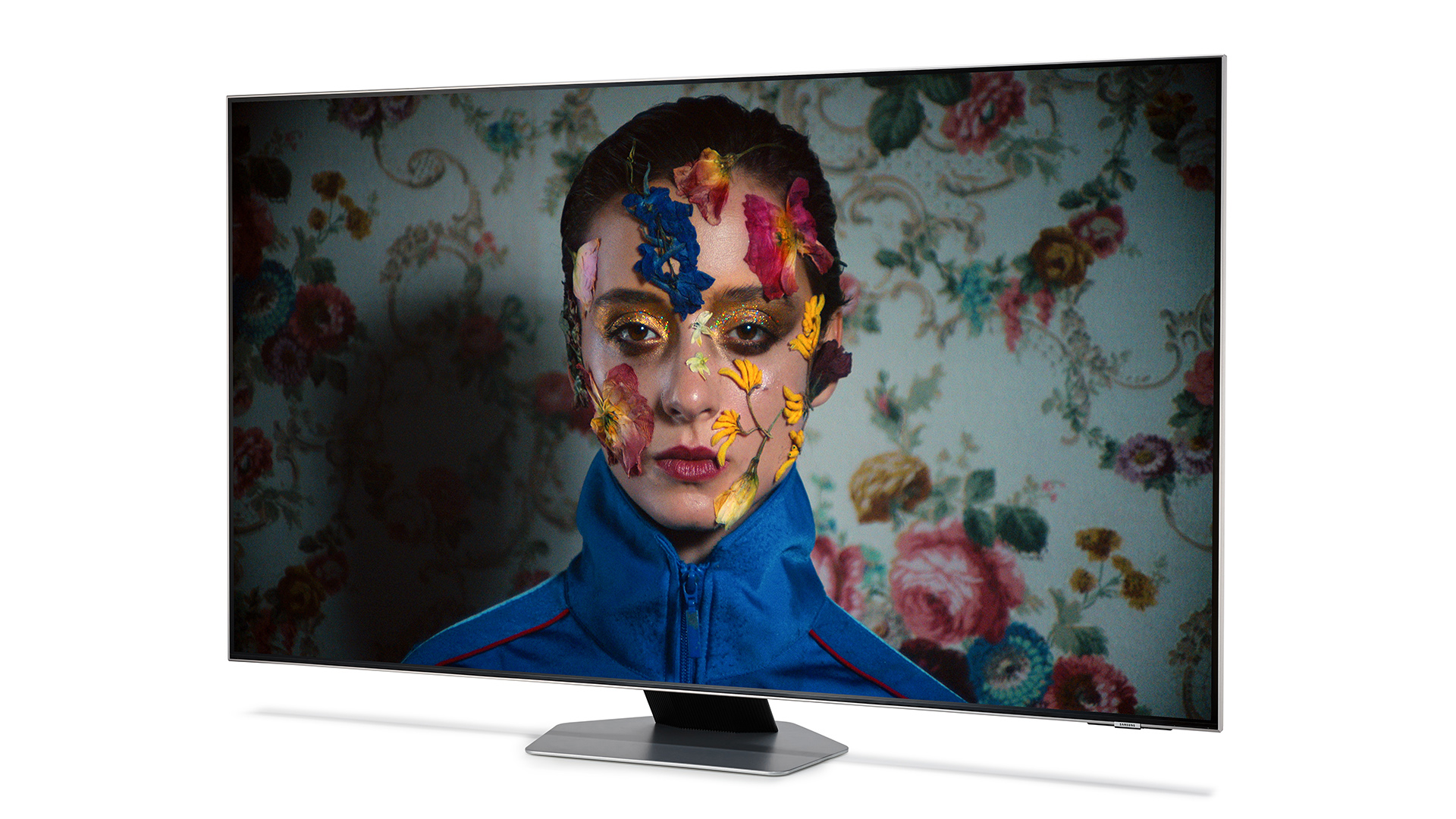
Screen size 55 inches (also available in 65, 75 and 85 inches)
Type IPS LCD with direct Mini LED backlight
Resolution 4K
HDR formats HLG, HDR10, HDR10+
Operating system Tizen-based Eden platform
HDMI inputs x4
HDMI 2.1 48Gbps x 4
Gaming features 4K/120Hz, VRR, ALLM, HGiG
ARC/eARC eARC
Optical output? Yes
Dimensions (hwd without stand) 71 x 123 x 2.7cm
The QE55QN85B’s connections are all built into the TV rather than on one of the external One Connect boxes found with Samsung’s flagship TVs. That doesn’t mean connectivity is compromised, though. The usual optical audio output, USB, Ethernet and wireless/Bluetooth options are present and correct, along with a roster of four HDMIs that are all equipped with a full HDMI 2.1 feature set. This latter point means gamers can enjoy graphics piped in at 4K resolution with 120Hz frame rates, as well as VRR and the ALLM feature that automatically switches the TV into its fastest-response Game mode whenever a game source is detected. That Game mode delivers a super-speedy 10.2ms response time that’s right up there with the best the TV world has to offer.
The 55QN85A’s HDR support covers the HDR10, HLG and HDR10+ formats. Not bad, but it’s disappointing that Samsung still refuses to adopt support for the popular Dolby Vision format. Dolby Vision-encoded content will simply play as HDR10, without the extra frame-by-frame image data Dolby Vision provides.
The QN85B’s smart features are a mixed bag. The amount of content the Tizen-based system carries is impeccable, with every remotely popular streaming service supported. That includes the catch-up apps for all the UK’s main terrestrial broadcasters. Samsung’s increasingly content-rich and well-curated TV Plus roster of live-streaming channels is becoming more and more interesting, too.
There’s also excellent support for voice control, with multiple voice platforms available, and the TV is easier than most to connect to external smart/network devices. The downsides are that there’s no support for the Freeview Play catch-up service ‘umbrella app’ (though the services Freeview Play caters for are all provided individually), and that the interface currently feels over-complicated and difficult to navigate.
Picture
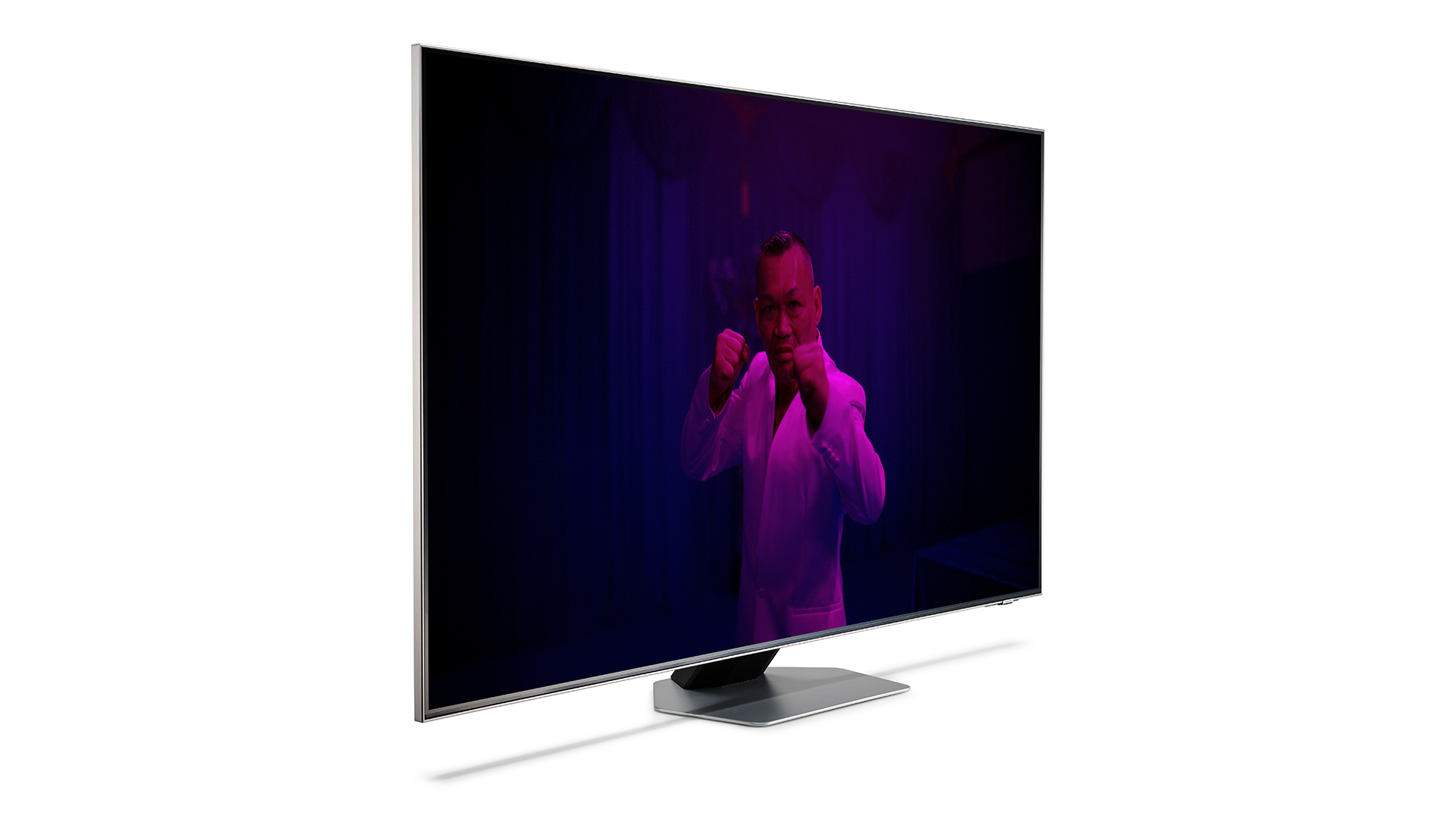
So, how well does Samsung’s Mini LED/local dimming solution work with an IPS panel? The short, almost miraculous answer is ‘very well indeed’.
For once we have a TV with enough light management to counter IPS’s contrast issues well enough to deliver dark scenes that actually look convincing, engaging and consistent with its strong bright scene performance.
Particularly key to this is the fact that black levels are unusually good, on a level we haven’t seen from any IPS TV before. We’re not talking black levels to rival OLED TVs or Samsung’s QN90B and QN95B models, but its black levels are certainly good enough to make dark scenes not only watchable but actually enjoyable.
Samsung’s light management is clever enough, in fact, that provided you’re viewing the QE55QN85B from as straight on as possible, its unexpectedly assured black levels are delivered without being affected by much backlight blooming at all. This, even more than the depth of the black levels, makes it hard to believe you’re watching an IPS panel.
Despite achieving unprecedented black levels for an IPS TV, the QE55QN85B is also very bright. High dynamic range content jumps off the screen with enough luminosity and intensity to really sell what makes HDR special, delivering extra lustre and volume to bright colours, and creating a much more authentic, real-world feel to both bright artificial lighting and natural outdoor vistas. No cheaper or similarly priced LCD TV we can think of is bright enough to get even halfway to the level of HDR experience the 55QN85B can achieve without compromising black levels much more than Samsung’s set does.
The 55QN85B continues Samsung’s reputation for delivering some of the sharpest 4K pictures around, bringing out every last pixel of detail and texture that even the sharpest sources have to offer. Samsung’s latest AI processor also does an excellent job of converting HD sources to 4K, adding texture and depth without causing grittiness or over-hardened object edges.
Throw in the 55QN85B’s considerable talents as a responsive and dynamic gaming monitor, and it does more than enough to both justify its price and rewrite the IPS TV rulebook. That said, there are just enough issues with the picture to cost it a picture quality mark.
The first is that making sure dark scenes don’t reveal heavy backlight clouding around any bright elements they may contain requires the TV to dim the bright elements down pretty heavily at times. Twinkling stars, street lights against a night sky, candles on a distant dark window ledge… all these mini highlights of HDR pictures can be left looking rather flat by the amount of light the QE55QN85B calculates it needs to remove from them to stop the backlighting throwing up clouds of extraneous light.
To be fair, Samsung’s calculation that dimming down small bright highlights is less distracting than big chunks of backlight blooming is in our view generally correct. But that doesn’t change the fact that it diminishes peak bright highlights of HDR images. The anti-bloom system also sometimes makes adjustments to brightness that you can actually see happening in real-time, which is, of course, a bit distracting.
Next, shots that contain a busy mix of bright and dark content can look a touch washed out and flat as the screen struggles to find a balance between retaining brightness and black levels simultaneously. Also, despite the usual viewing angle benefits associated with IPS screens, the backlight clouding that’s typically so well hidden when watching the 55QN85B head-on becomes much more noticeable if you’re watching it from more than around 20 degrees off-axis.
Some shadow detailing can occasionally go AWOL in very dark picture areas, especially in the Standard and Dynamic picture modes, and activating the Game preset results in a bit more backlight blooming than you get with any of the video presets – presumably because the TV has to ramp down the local dimming system to produce images faster.
Finally, while the 55QN85B’s pictures generally feel very sharp, they can soften slightly when there’s a lot of motion to cope with.
Sound

It’s a relief to find that the 55QN85B avoids the underwhelming audio efforts of some other models in Samsung’s current TV range. There’s no repeat of the swallowed, contained tone associated with some of its siblings, and the welcome power joins forces with impressive clarity and effect positioning/tracking to create a crisp, busy, involving and sturdy soundstage. The speakers don’t succumb as readily as some siblings to buzzing and distortion issues during heavy bass moments, either.
In an ideal world, the 55QN85B would have a bit more raw volume at its disposal, and it doesn’t have enough dynamic range to follow ultra-loud film soundtracks all the way to their crescendo, tending to flatten off and stop growing a bit too early.
For most of the time, though, the 55QN85B is a competent, even quite elegant audio performer – something that also makes it a better bet than some of its siblings as a Q-Symphony partner for one of Samsung’s soundbars.
Verdict
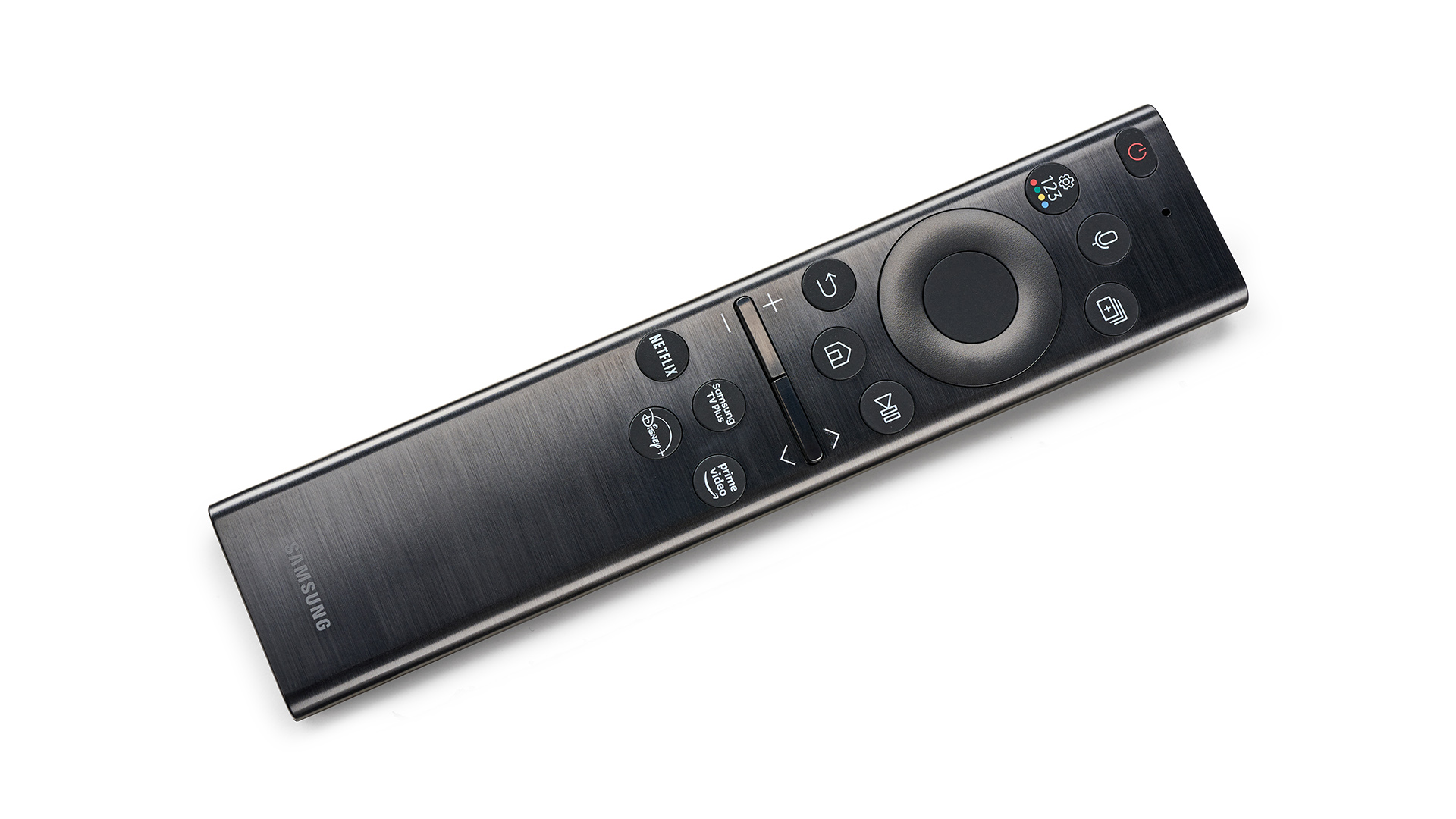
The Samsung QE55QN85B proves a pleasant surprise on multiple levels. In particular, its bright, colourful and surprisingly contrast-rich Mini LED-inspired picture quality is good enough to make us reconsider the potential of IPS screens in the TV world, while its sound shows that Samsung really can do audio quite well from a skinny TV if it puts its mind to it.
The competition in the Mini LED world is hot and about to get much hotter, but for now, at least, the 55QN85B is a strong all-rounder at its price.
SCORES
- Picture 4
- Sound 4
- Features 5
MORE:
Read our review of the Philips 48OLED807
Also consider the TCL 55C735K
Best 55-inch TVs: smart, 4K, HDR and OLED TVs
John Archer has written about TVs, projectors and other AV gear for, terrifyingly, nearly 30 years. Having started out with a brief but fun stint at Amiga Action magazine and then another brief, rather less fun stint working for Hansard in the Houses Of Parliament, he finally got into writing about AV kit properly at What Video and Home Cinema Choice magazines, eventually becoming Deputy Editor at the latter, before going freelance. As a freelancer John has covered AV technology for just about every tech magazine and website going, including Forbes, T3, TechRadar and Trusted Reviews. When not testing AV gear, John can usually be found gaming far more than is healthy for a middle-aged man, or at the gym trying and failing to make up for the amount of time he spends staring at screens.

